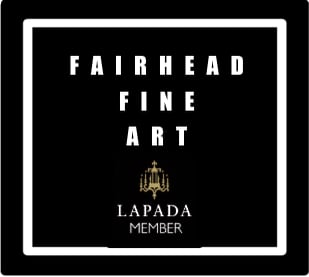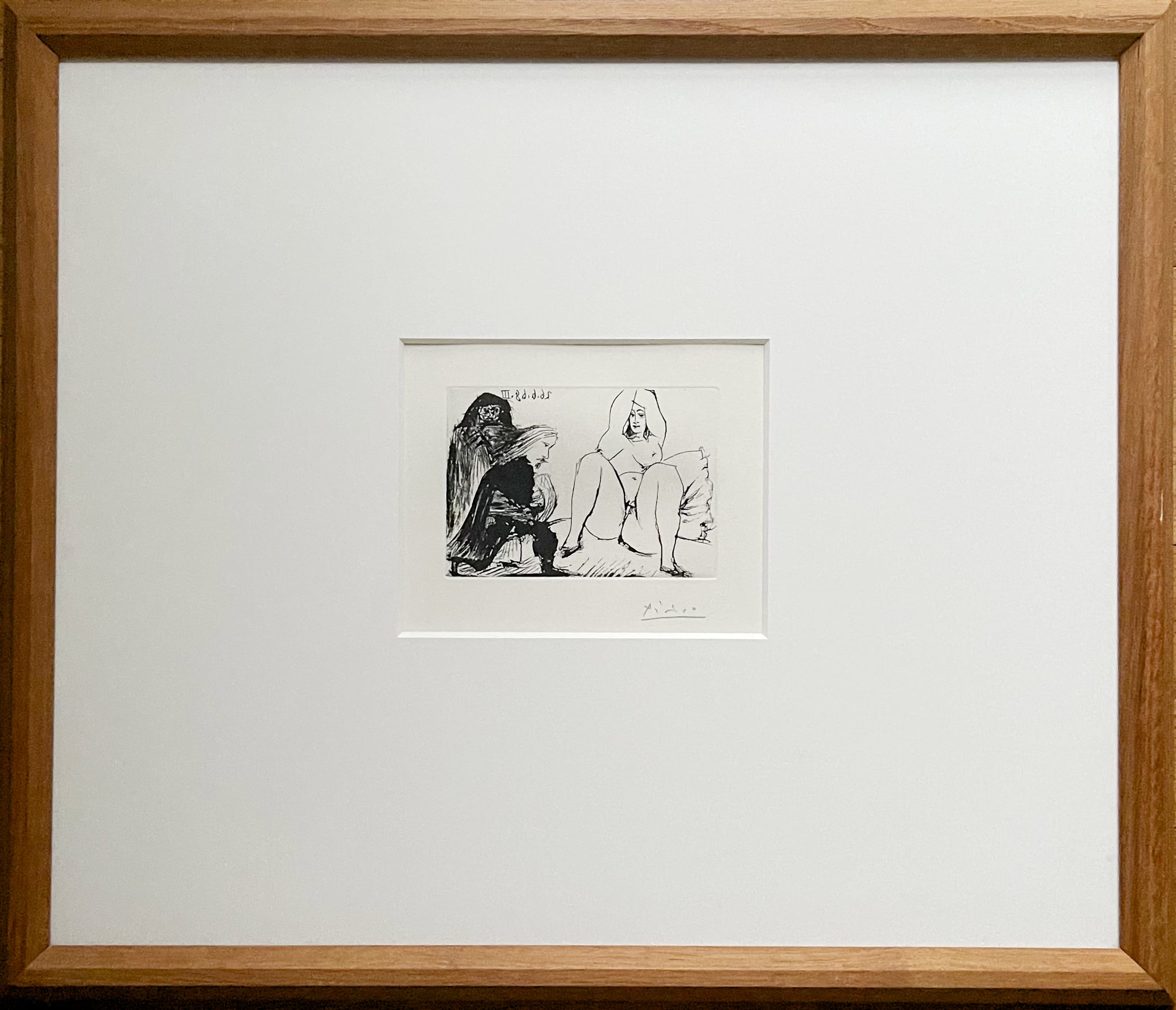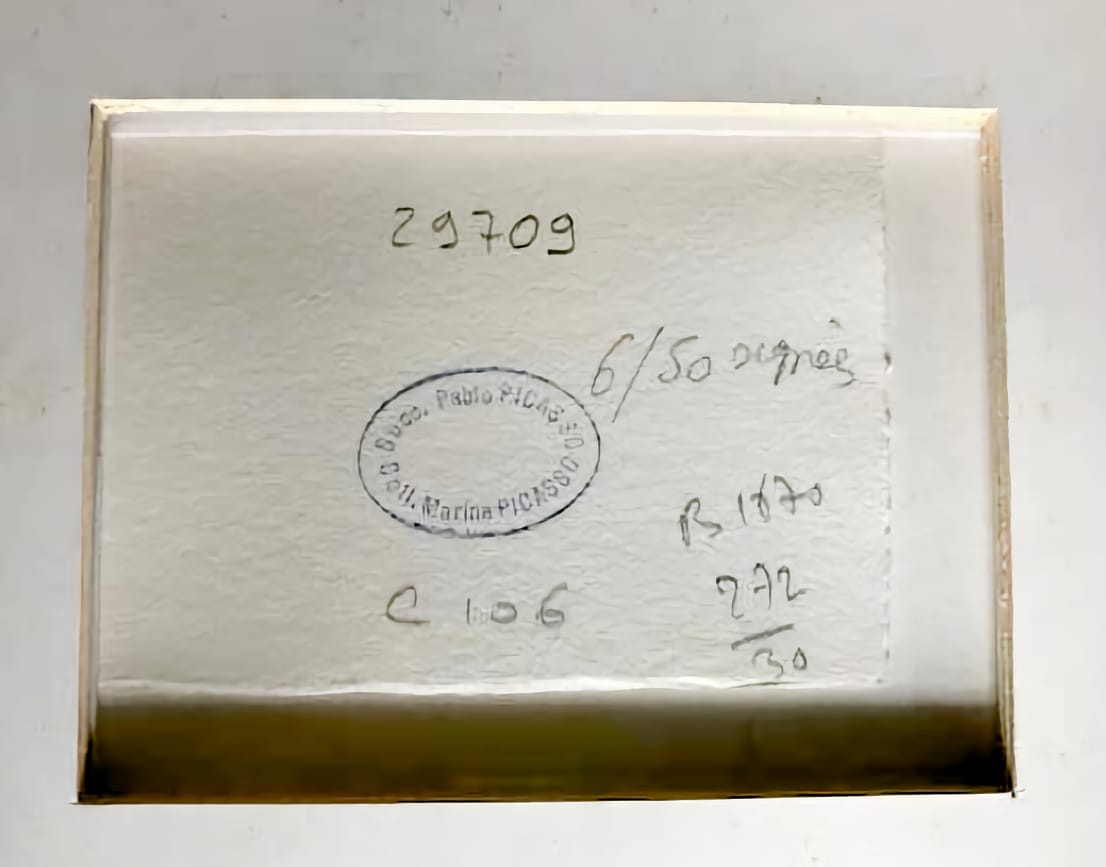Pablo Picasso - La Celestine, sa protegee, et un jeune gentilhomme
£ 0.00
Original sugar aquatint, Mouguins 26/6/1968, on Rives paper, signed by the artist in pencil
Edition: Artists Proof (There were 15 artists proofs) . There was also a signed and numbered edition of 50 A further 400 unsigned etchings, on flimsy paper, were made for the book “La Celestine”.
References
Bloch, Georges. Pablo Picasso, catalogue de l'oeuvre gravé et lithographié, 4 vol.
(Number 1670)
Geiser, Bernhard and Brigitte Baer. 1986-1996. Picasso: Peintre-Graveur, Catalogue raisonné de l'oeuvre gravé et des monotypes, 7 vols. Berne: Kornfeld. (1686.Bb1)
Goeppert, Sebastian, Herma Goeppert-Frank & Patrick Cramer. 1983. (GC). Pablo Picasso: The Illustrated Books. Geneva: Patrick Cramer. (149.09)
Printed by: Atelier Crommelynck
Published by: Galerie Louise Leiris in 1969.
Provenance:
- The Estate of Pablo Picasso
- Marina Picasso (The artists Grand Daughter): After the artists death the lions share of Picasso’s works were inherited by Marina Picasso. Verso is the Marina Picasso Succession stamp and catalogue reference numbers.
- Galerie Jan Krugier (Their label verso): Marino Picasso on receiving her inheritance had the works catalogued by her accredited Dealer who was based in New York and Geneva.
- Private collection UK
Note: The 66 original etchings done for La Célestine are part of Picasso’s 347 Suite (ours is plate number 274) , a collection of 347 etchings and aquatints generated in a furious creative frenzy; the 87-year-old artist turned out etchings at the rate of virtually two a day between March 16th and October 5th 1968, a mere seven months.
The La Célestine suite are illustrations, or more accurately a response, to one of the most significant works in Spanish literature, properly known as La Tragicomedia de Calisto y Melibea, a dramatized novel written by Fernando de Rojas and published in Burgos in 1499. Picasso had been familiar with the work since adolescence and in later life he collected various rare editions. The tale revolves around Celestina, an aged matchmaker whose corruption knows no bounds as she resorts to pulling one ruse after another in order to further her position.The old procuress and her hedonistic band of prostitutes, corrupt servants, clerics, officials, swaggering pimps and courtiers inhabit scene after scene driven by gross self-interest. The bawdy lewdness of the La Célestine plot is evident from its beginning, as is its account of selfish human indulgence, and the reader is the voyeur of all their sordid dealings. The story tells of a bachelor, Calisto, who uses the old procuress and bawd Celestina to start an affair with Melibea, an unmarried girl kept in seclusion by her parents. Though the two use the rhetoric of costly love , sex — not marriage — is their aim. When he dies in an accident, she commits suicide. The two lovers can be seen together in our etching.
This is number 190 from the 347 series and is Illustration IX for La Celestine de Fernando de Rojas, Paris, 1971, Edition Crommelynck (Page 37).
The copper plate was cancelled in 1979 and is held by the Musee Picasso, Paris, presented by Crommelynck.
Size: Plate size: 8.9 x 12.4 mms
Category Pablo Picasso




